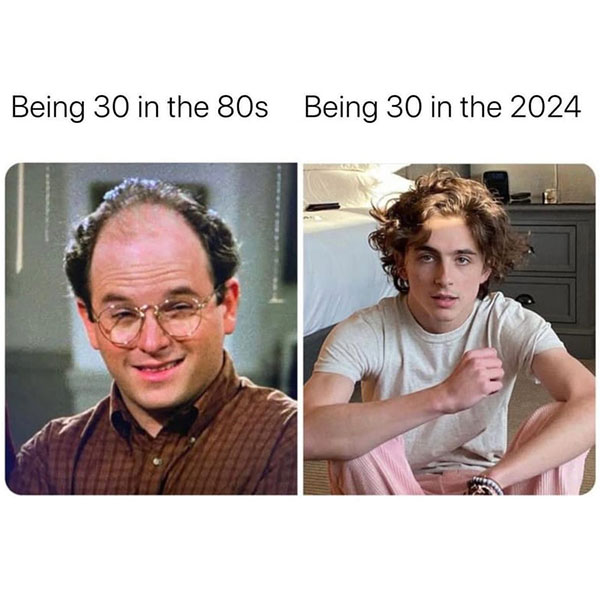Connecting the Dots #99
The fall of mass media
The digital transition has been tough, but what lies ahead now will be even tougher. Artificial intelligence is churning out endless amounts of content, diminishing the value of old traffic-focused strategies. The future belongs to those who focus on quality and unique content. Old school media will need to be smaller, more adaptable and able to find new ways to survive.

Marketing and media
#1 Surprise, surprise, Google is a monopoly. What next? No one knows. Even if Google stops paying, people will still choose it. Why? Because it’s better. Bing has been trying for years and has only 5% of the market. What about AI and LLM? Can ChatGPT mix up the cards? Maybe, but don’t expect miracles. Google has the infrastructure, data and money to adapt. The only chance Google will fall is if someone changes the game completely.
#2 YouTube is second in media distribution. Netflix made a big splash in June, increasing TV viewership by almost 12%, according to Nielsen. It jumped from sixth to fourth place among media distributors and now holds 8.4% of total TV time. YouTube isn’t slowing down either and is nearing the top with nearly 10% share. However, Disney is still the king, holding the top spot with 10.8% share thanks to a big increase in Disney+ viewership.
#3 Mass brands without mass reach. Without big media, mass brands get lost in an information space where everything is fragmented into millions of small worlds. Instead of unified experiences, we have a world tailored to the individual, where personalization has replaced shared experience.
#4 Donald Trump started using AI in a campaign and it ended in a fiasco. After sharing a picture of Kamala Harris at a fake communist rally, Trump decided to “accept” a fake support from Taylor and her supporters. Swifties are known for being tough and influential, and now they have Trump in their crosshairs.
#5 Gen Z and social revolution. Gen Z, described as the “loneliest generation”, is no longer lonely. From running clubs to chess clubs, we hear from all sides that young people are rediscovering themselves in the real world. Gen Z realizes that life is better when you have someone to share it with. Through these activities, they are overcoming loneliness and creating new forms of connection.
#6 Pumpkin Spice Latte. Starbucks decided that fall starts in August, so they brought out their popular Pumpkin Spice Latte earlier than ever before. Since its debut in 2003, the Pumpkin Spice Latte has become a cultural phenomenon. For Starbucks, this orange triumph is crucial because it accounts for up to 10% of their total sales. And while searches for “Starbucks near me” are on the decline, new trends like “#Augtober” and “#Summerween” show that people are ready for fall, even if the calendar shows otherwise.
#7 In recent years, food has been getting more exposure in advertising. This trend also reflects changes in social values – from speed and convenience to health and sustainability. Fresh and healthy food has become a luxury that many cannot afford. And in fashion, it’s often about which food can symbolise luxury, health and exclusivity.
#8 TOP 100 consumer AI apps. Creative tools dominate: 52% of the web apps in the ranking focus on generating or editing content, regardless of whether it’s images, videos, music or speech. Among the 12 new participants, 58% are from the creative tools sector.
Life
#1 We need to play more. We’re obsessed with work. It defines our identity, gives structure to our lives and guides us towards our goals. In a capitalist society, we have become “subjects of success” who are constantly under pressure to achieve more, be more and have more. Play is an autotelic activity where we work not for external rewards but for the joy of the activity itself. When we play, we are not driven by productivity or purpose.
#2 A beautiful page that shows how a Disney animation is made.
#3 Mikroplastics everywhere. Scientists have found microplastics in human brains, the latest finding in a series of studies that reveal the presence of tiny plastic particles in practically every part of the human body. The new study discovered microplastics in the liver, kidneys and brains of human bodies, with brain tissue containing up to 20 times more plastic than other organs. More worryingly, the brains of people with dementia contained significantly more plastic than the brains of healthy individuals.
#4 Once the highlight of the audiophile experience. The minidisc and its visual history.
#5 Waymo vs. Tesla. 10 000 : 0. Waymo now provides more than 100,000 paid rides for robotaxis every week in Los Angeles, San Francisco and Phoenix.
With love
P.

 Director
Director  f Taste
f Taste


